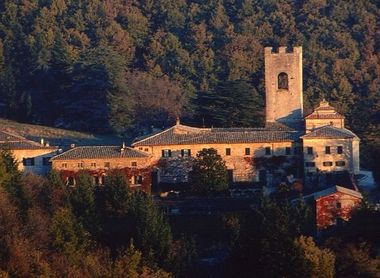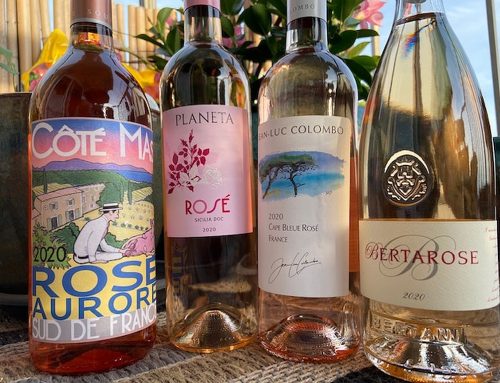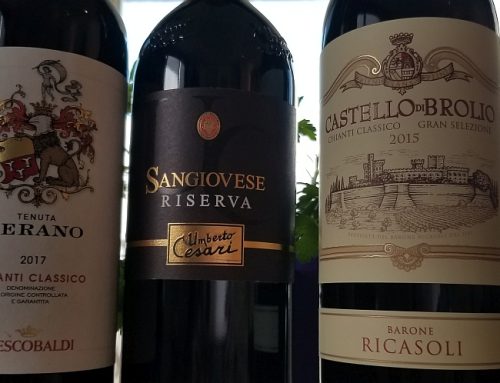In a modern world full of flash-in-the-pans, Badia a Coltibuono stands out for its history, tradition and authentic Chianti Classico wines.
Almost a thousand years ago, vines were planted by Vallombrosan monks on the property they named Badia a Coltibuono, which translates to abbey of the good harvest. If ever there was a more appropriate name for a winery, I don’t know it.
The monks extended their vineyards and agriculture over a vast area of Chianti until 1810, when the land was confiscated and sold under Napoleonic law. In 1846, Florentine banker Guido Giuntini purchased it. Today, the sixth generation of the family, Emanuela, Roberto, Paolo, and Guido Stucchi Prinetti continue the evolution of Badia a Coltibuono.
My first visit was in the mid-1980s. I met Roberto Stucchi Prinetti, a recent graduate of the enology program at University of California at Davis; his sister, Emanuela, who handled marketing and public relations; and their mother, Lorenza de’Medici who developed a cooking program that led to cookbooks and a television program on PBS. I also slept in the abbey on a wooden bed in a dark, windowless, cell-like stone room. It convinced me not to become a monk.
Subsequent visits introduce me to the new restaurant and appreciation of Roberto’s winemaking: He held fast to Chianti Classico’s character and traition , while developing new wines that reflected his California education and experience.
Last month, during her New York visit, Emanuela reawakened these memories as she presented her newest wines, alongside the 1970 Badia a Coltibuono Chianti Classico Riserva.
Since 2000, Badia a Coltibuono vineyards and olive groves have been certified organic. The 2010 Chianti Classico is a traditional blend of sangiovese with small amounts of canaiolo, ciliegiolo and colorino. The wine offers a soft cherry scent, and black cherry and cranberry flavors carried on a medium body, with a crisp acidity. The 2010 Badia a Coltibuono Chianti Classico will be here in May and retail for about $19.
Our second glass, the 2008 Badia a Coltibuono Chianti Classico Riserva, is a traditional blend with sangiovese from older vines. It has an appealing aroma of roses, balsamic and cherries, and a full, ripe fruit flavor with typical sangiovese bright acidity. It is immediately likeable and drinkable, and priced around $32.
Sangioveto is the local name for the sangiovese grape. In 1980, Badia a Coltibuono created its first sangioveto-labeled wine, with only sangiovese from its oldest vines.
Stucchi Prinetti said that since 2003, the winery has followed an ancient practice of fermenting and keeping the wine in small casks until spring, then transferring it to a mix of Slovenian and French oak barrels for 18 months aging and another year in bottle. The result is a 2009 Badia a Coltibuono Sangioveto with a cherry and rose scent, rich black cherry flavor and velvety texture. It is a delicious, well-made wine with excellent aging potential. It retails for about $59.
The 1970 Badia a Coltibuono Chianti Classico Riserva provided a historical reference to our tasting. Wines from this period were made mostly from sangiovese and some other red grapes, but also included small amounts of white wine. They were kept in large old casks for years of aging.
As primitive as we see these methods, the wines often aged gracefully. This wine remained in cask until 1983; its translucent color and delicate texture rival any great red Burgundy of equal age. Still perfumed and flavorful, the 1970 Badia a Coltibuono Chianti Classico Riserva reminds us that the future of its current wines is grounded in its past.








Leave A Comment